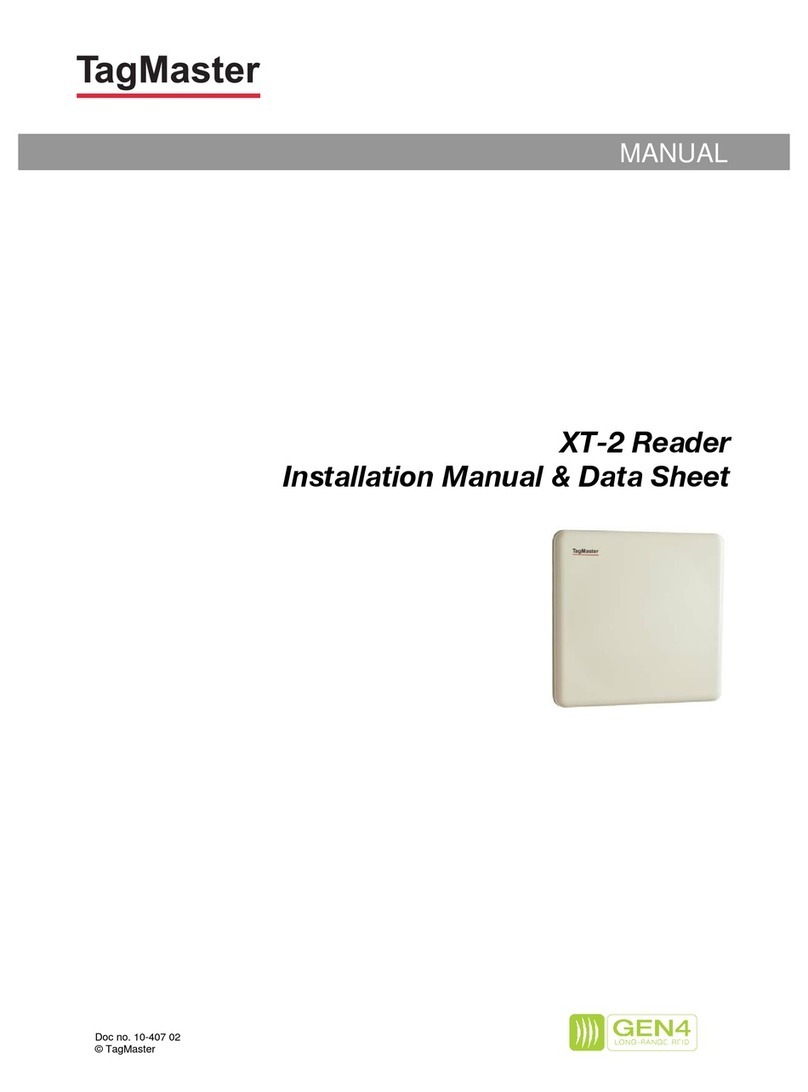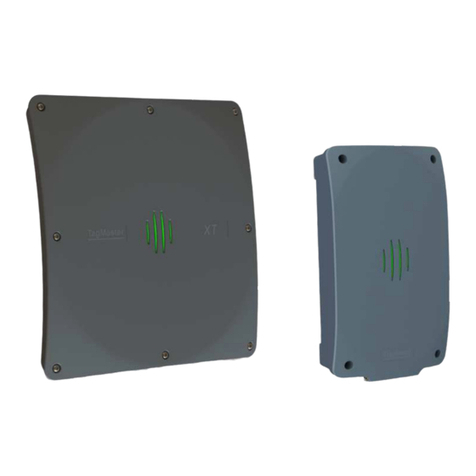TagMaster AB
HW Installation Guide TABLE OF CONTENTS Manual issue 01
3
1 TABLE OF CONTENTS
1TABLE OF CONTENTS...................................................................................................... 3
2REVISIONS........................................................................................................................... 5
3ASSOCIATED DOCUMENTATION ................................................................................. 5
4INTRODUCTION................................................................................................................. 6
4.1 Audience.......................................................................................................................... 6
4.2 System Block Diagram.................................................................................................... 7
4.3 Definitions....................................................................................................................... 8
4.4 References ....................................................................................................................... 8
5SAFETY NOTICE ................................................................................................................ 9
5.1 General ............................................................................................................................ 9
5.2 Specific warning and caution statements are used throughout this manual.................. 10
5.3 Installation..................................................................................................................... 10
6SYSTEM COMPONENTS................................................................................................. 11
6.1 Communicators ............................................................................................................. 11
6.2 ID Tags.......................................................................................................................... 11
7ENVIRONMENTAL CONSIDERATIONS ..................................................................... 12
7.1 General .......................................................................................................................... 12
7.2 Electromagnetic immunity ............................................................................................ 12
8ELECTRICAL REQUIREMENTS................................................................................... 13
8.1 Temperature .................................................................................................................. 13
8.1.1 Communicators ..................................................................................................... 13
8.1.2 Tags ....................................................................................................................... 13
8.2 Supply Voltage.............................................................................................................. 13
8.3 Radio Interface .............................................................................................................. 13
9MECHANICAL INSTALLATION ................................................................................... 15
9.1 General .......................................................................................................................... 15
9.2 Readers .......................................................................................................................... 15
9.2.1 Mounting ............................................................................................................... 15
9.2.2 Connecting Cable recommendation ...................................................................... 16
9.3 ID-Tags.......................................................................................................................... 17
10 ELECTRICAL CONNECTIONS.................................................................................. 18
11 EARTHING REQUIREMENTS ................................................................................... 19
12 START-UP....................................................................................................................... 20
12.1 General .......................................................................................................................... 20
12.2 Inspection ...................................................................................................................... 20
12.3 Verifying communication ............................................................................................. 20
12.3.1 Serial host communication.................................................................................... 20
12.3.2 Reader - Tag communication ................................................................................ 20
13 TROUBLE SHOOTING................................................................................................. 22
13.1 An S1566 Reader malfunction ...................................................................................... 22
13.2 Unsuitable interface converters..................................................................................... 22






























